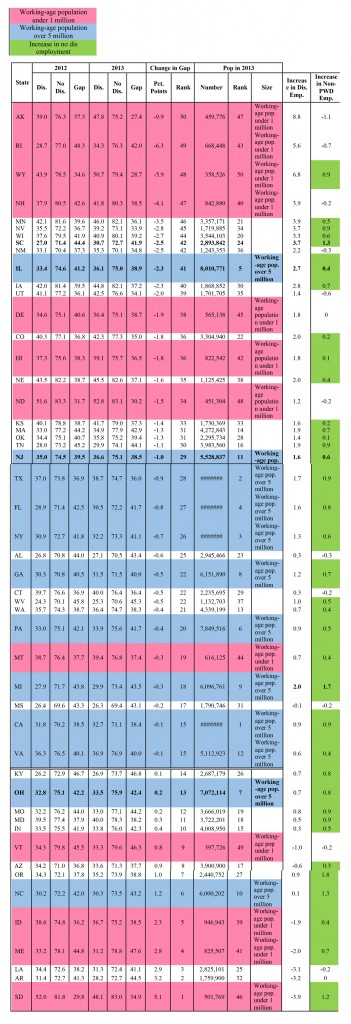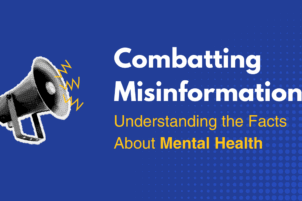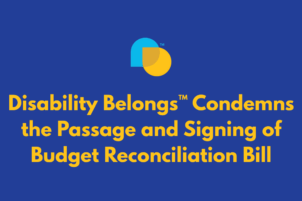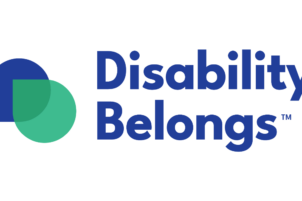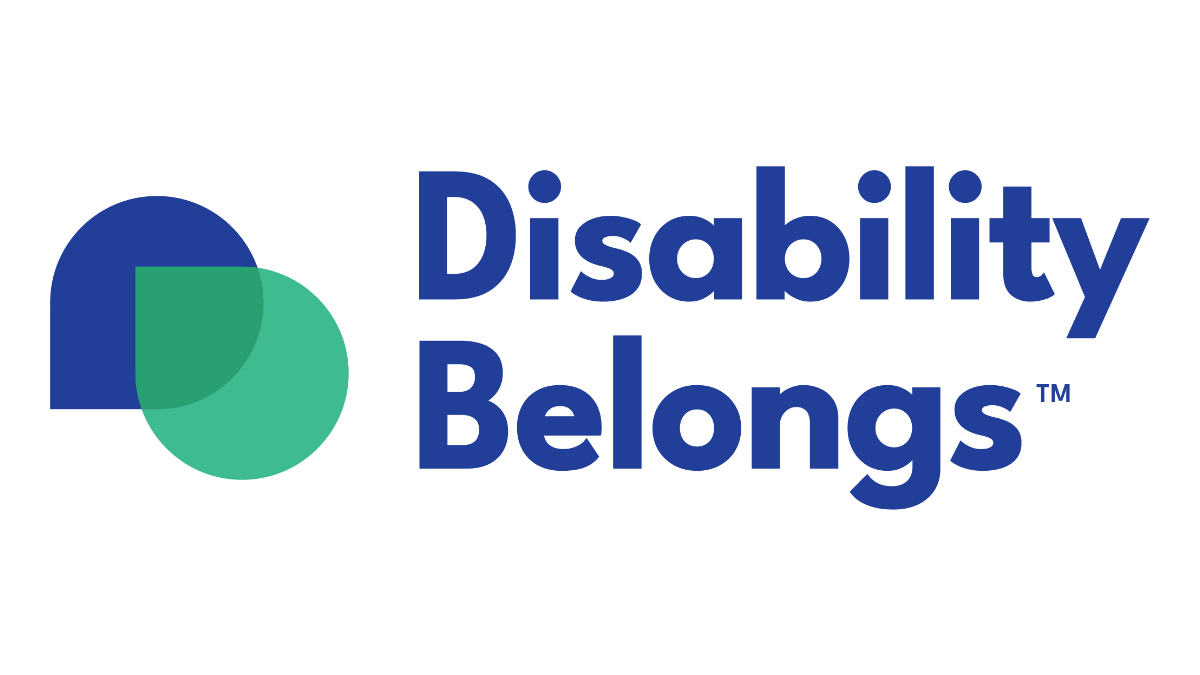“Pity and more government handouts and lawsuits are not the solutions for people with disabilities who want a better future. The keys are in ending stigmas and misconceptions, aligning public policies to proven best practices that enable opportunities and independence, and in putting capitalism to work for people with disabilities, employers and taxpayers alike.”
October 2015
Introduction
Honorable Committee,
First, we want to say thank you to all of the Committee’s members for your dedication and leadership spearheading this vital effort to expand jobs and careers to people with disabilities. RespectAbility is pleased to have this opportunity to submit public testimony. As we have in the past, we will utilize this opportunity to share our perspective and to suggest further avenues of inquiry. There remain many issues to address as you look ahead to the final report. As ever, our focus and perspective remains centered on combating the persistent stigmas and myths that are critical barriers to empowering more people with disabilities to pursue competitive, integrated employment.
Our testimony addresses three core topics: having a Jackie Robinson strategy, gaps in state performance metrics, and the power of changing narratives. These three issues are critical to the work of the Committee and we hope that you dig deeper into these issues.
1. Focus on the Jackie Robinson Strategy
Stigmas, myths, and misconceptions about people with disabilities are a critical obstacle in the push for improved employment outcomes. Our perspective as an organization is that the barriers created by stigma will be broken by using what we call a “Jackie Robinson Strategy.” As the first African-American to play major league baseball, Robinson tore down decades of discrimination and blazed a trail for other talented and diverse athletes to follow. He helped his team win games and his success as a player helped to sell tickets. He was the talent that his employer needed, and contributed to the bottom line. That is how we, in the disability community, can also break down barriers and achieve success. We can do it by being the people that others will be proud to call co-workers and friends.
The Jackie Robinson strategy suggests that strategic triage is needed. While it is important to have pathways to success for people who have been long-term unemployed or in sheltered workshops, we also need to achieve early wins. To break down barriers and stigmas, the people with disabilities that go into competitive, integrated employment need to achieve in their jobs. Doing so means that the greatest focus and largest efforts need to be where there will be a serious return on investment for employers. The “low hanging fruit” will be in helping young people with disabilities to successfully transition into the workforce, as well as by helping “re-home” aging or other workers who acquire disabilities into new and productive roles. Indeed, by focusing on empowering youth with disabilities and people with work experience who acquire disabilities later in life to blaze a trail, we will create a path for those who may have a greater need for employment supports to also succeed. If employers see their bottom line improved by the talents of the initial employees with disabilities they hire, then they will be more likely hire others with more significant barriers to work.
2. Examine the Gaps in State Performance Metrics
While it’s easy to talk about challenges, obstacles, and barriers, it is also vital to talk about success. We need to recognize that there are several states that are doing remarkable work in their drive for improved employment outcomes for people with disabilities. Indeed, there are several states that have achieved an employment rate of over 50% for their citizens with disabilities. In the Dakotas, Wyoming, and Alaska, people with disabilities are twice as likely to be employed as they are in other states such as West Virginia, Mississippi, Kentucky, Alabama and Arizona.
To celebrate the start of National Disability Employment Awareness Month, we have released a report which describes in depth how the top 10 states have achieve high employment rates for people with disabilities. Our report catalogs the best practices and successful models that are opening pathways to competitive, integrated employment for youth with disabilities. The results are surprising. As mentioned above, the Dakotas stand out. Fully 52% of North Dakotans with disabilities are employed, as are 50% of Wyomingites with disabilities and 48% of South Dakotans with disabilities. Minnesota ranks in the top 10 with 46% of their 266,400 working-age people with disabilities employed. Compare those metrics with the numbers of the bottom 10 states listed on the tables attached to our testimony.
Given their abundant resources and vast population, one would expect California to lead the nation in terms of competitive, integrated employment. However, the Golden State only ranks 36th in the country in terms of their employment rate of people with disabilities. Only 32.7% of the 1,793,900 working age Californians with disabilities are employed. Even Massachusetts, which “urban legend” suggests is good on these issues because of the legacy of Senator Ted Kennedy, is only 27th, with an employment rate for people with disabilities barely above the nation average at 34.9%.
As the Committee moves forward into the year ahead and the process of creating a final report, RespectAbility invites you to connect with leaders in these states and learn from them. We invite you to look at Delaware and Wisconsin, where dedicated Governors have led their states to aggressively expand employment opportunities and transition services for people with disabilities, especially youth. These states offer considerable lessons, which need to be learned nationally. Understanding what has worked in these states is vital to empower people with disabilities to achieve the American Dream, just like everyone else.
3. Changing the Narrative
Maine has been viewed by some as a model state because it has Employment First policies enshrined both in executive order and in state legislation. However, when you look at the gap between the employment rate of people with disabilities and those without disabilities, Maine comes dead last in the country. Government action alone–through executive orders, legislative decisions, and regulatory oversight– is insufficient. The necessary condition for achieving greater competitive, integrated employment for individuals with disabilities is engaging employers and meeting their talent needs. As such, we have a few insights to share.
The Marketplace Dynamics Subcommittee is heading in the right direction with their preliminary recommendations. However, a tighter focus is needed to achieve the greatest impact with their work. First of all, there are several ideas to consider in order to ensure that the “national education campaign” discussed by the subcommittee is successful. This campaign will only be effective if it impacts the right audience, in the right way, with the right message.
The Right Audience:
The core employer audience is twofold and has two distinct communications challenges. The first is to reach both CEOs AND hiring managers to showcase the abilities of people with disabilities and the benefits of hiring and promoting them. This includes the talents PwDs bring, the data which shows better retention and loyalty of workers with disabilities, and how reflecting the potential customer base, especially in a country with 56 million Americans with disabilities, can make an organization stronger.
But the second challenge is just as vital. Hiring managers, who will be the key implementers of any serious push for expanding employment opportunities, have doubts and fears about their own abilities to successfully accommodate and manage PwDs.These must be also addressed. Hiring managers need to see themselves as able to excel at recruiting, hiring, supervising or working with teammates with disabilities. Real training and confidence building is needed. So is ensuring that large companies have a central address where hiring managers can seek help on accommodations or legal issues as they arise.
The Right Way:
We live in a world where perceptions are shaped at lightning speed by social media, entertainment and news. Much of that can be conflated into “info-tainment” where it is it hard to distinguish fact from fiction. Any campaign needs a multilayered approach in order to change the narrative around workers with disabilities so that they are seen for the abilities that they bring to the table. Above all, this is a process that should involve close connection to the professionals in the world of human resource management.
The Right Messages:
We use focus groups and polling to determine the right messages, and are available to help you and others involved in these issues. Moreover, the stories we tell all need to be fact-driven and from respected companies and other employers. The work of the United States Business Leadership Network/AAPD Disability Equality Index is a shining success that has only started to reach its potential. The 19 companies that scored 100 points on this index deserve to be celebrated both for their disability hiring efforts and their increasing bottom lines. Moreover, vocational rehabilitation and workforce board and agency leaders should attend the USBLN Annual meeting so they can truly be in step with their corporate talent customers.
It is important that new narratives around disability, employment, and success be told in the words of business leaders themselves. For example:
“When we truly leverage the strategic value of diversity and inclusion, we understand customers better, we innovate more consistently, and we develop each other and ourselves much better, much faster, and much stronger.” – A.G. Lafley, Chairman and CEO, Proctor and Gamble
“EY’s culture of inclusion has been a catalyst of our success and holds such promise for our future” – Steve Howe, Americas Managing Partner, EY
“We understand that diversity makes us stronger because it helps us create powerful, lasting relationships with our customers and communities.” – Randall Stephenson, Chairman and CEO, AT&T
Indeed, pity and more government handouts and lawsuits are not the solutions for people with disabilities who want a better future. Companies need to move from compliance alone to real market-driven strategies. Inclusive employment and diversity is good for business, period. Any “national education campaign” needs to be rooted in that concept and repeat that message for our nation to hear.
CAVEAT EMPTER:
1. We are deeply concerned that the proposed state plan requirements recently opened for public comment under WIOA are heavy on process and light on demand for excellent performance. WIOA is a historic opportunity for the disability community, employers and our nation. We worry there will be too much focus on outputs and not on outcomes. The goal is not to check off boxes on a red-tape “to-do” list. It is to dramatically improve the workforce participation numbers and experiences for people with disabilities.
2. The Advisory Community’s interim report is a complex document. While it is a complex challenge, there is a simple truth underpinning this entire process. The success of the Workforce Innovation and Opportunity Act depends on being an employer driven paradigm shift. Yes there are new rules and regulations, but this law is fundamentally about spurring innovation and expanding opportunity. Expanding opportunities for people with barriers to employment such as disability requires strong partnerships with employers.
3. Whether we are talking about people with disabilities or out of school youth, myths, misperceptions, and stigma and are barriers to success. As such, there is an important consideration to be had here around strategy and the workforce system. Communications efforts should be more research-driven and aimed at the right audience. These barriers can be overcome if the right strategy is adopted.
Sincerely,
Jennifer Mizrahi, President & CEO, RespectAbility
Philip Pauli, Policy and Practices Director, RespectAbility
Table 1 Ranking 50 States by Employment Rates and Employment Gap
Data Source- Column 1: Table 2.1: Employment—Civilians with Disabilities Ages 18 to 64 Years Living in the Community for the United States and States: 2013 from the Annual Disability Statistics Compendium
Data Source-Column 2: Table 2.9: Employment Gap—Civilians Ages 18 to 64 Years Living in the Community for the United States and States, by Disability Status: 2013 from the Annual Disability Statistics Compendium
Link: http://disabilitycompendium.org/compendium-statistics/employment
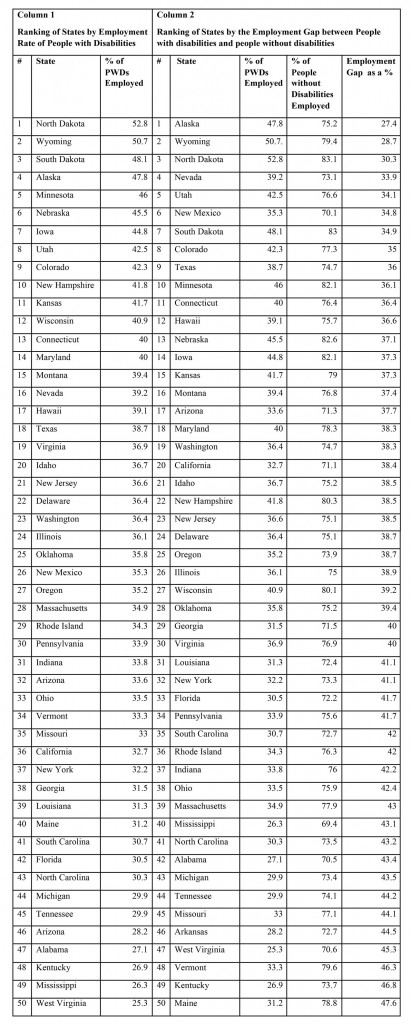
Table 2
From 2012 to 2013, the employment gap closed by one percentage point or more in 22 states.
The top four states with the greatest reductions (AK, RI, WY, and NH) were small states– with working-age populations under one million persons. It is hard to make comments about small states, because these statistics are estimates based on state-level samples. Smaller states have smaller samples and thus have a higher degree of year-to-year variability. I am hesitant to read too much into reductions and expansions in the employment gap for small states.
Looking at large states– with working-age populations over 5 million persons–Illinois (a 2.3 percentage point reduction) and New Jersey (a 1 percentage point reduction) stand out. These are two large industrial states.
All of the states that experienced reductions greater that one percentage point also experienced increases in employment rate of people with disabilities, so none of these reductions were due a reduction in the employment rate of people without disabilities.
The state that really stands out is South Carolina, with a 2.3 point reduction, while also having a 1.3 point increase in the employment rate of people without disabilities. The big question is whether we can attribute success, like the success in South Carolina to changes in policy or new innovative approaches to employing people with disabilities.
